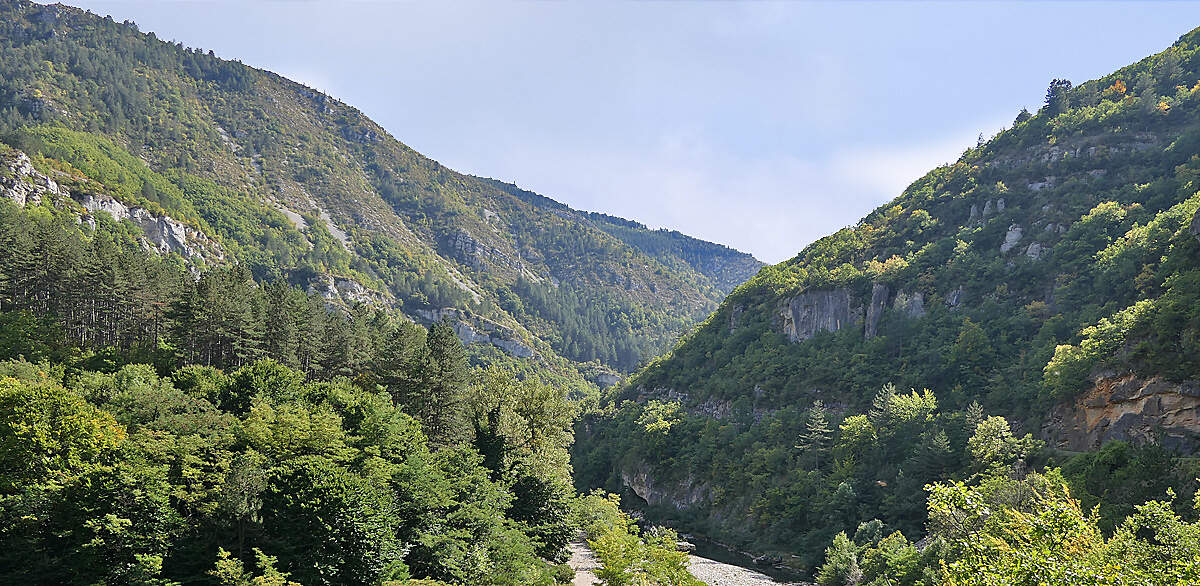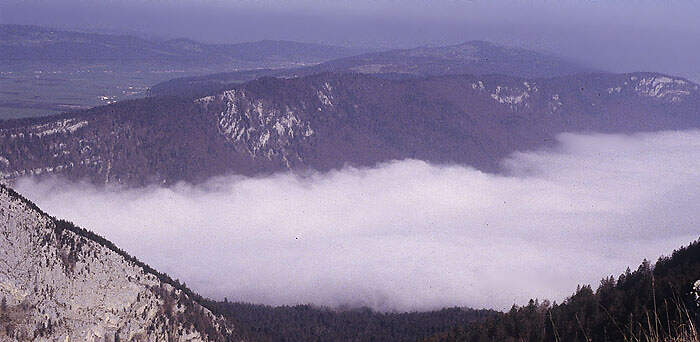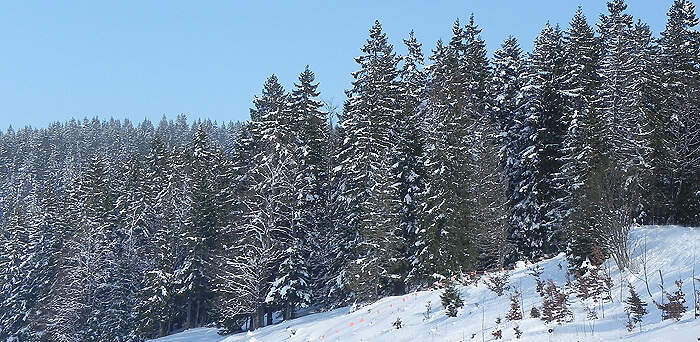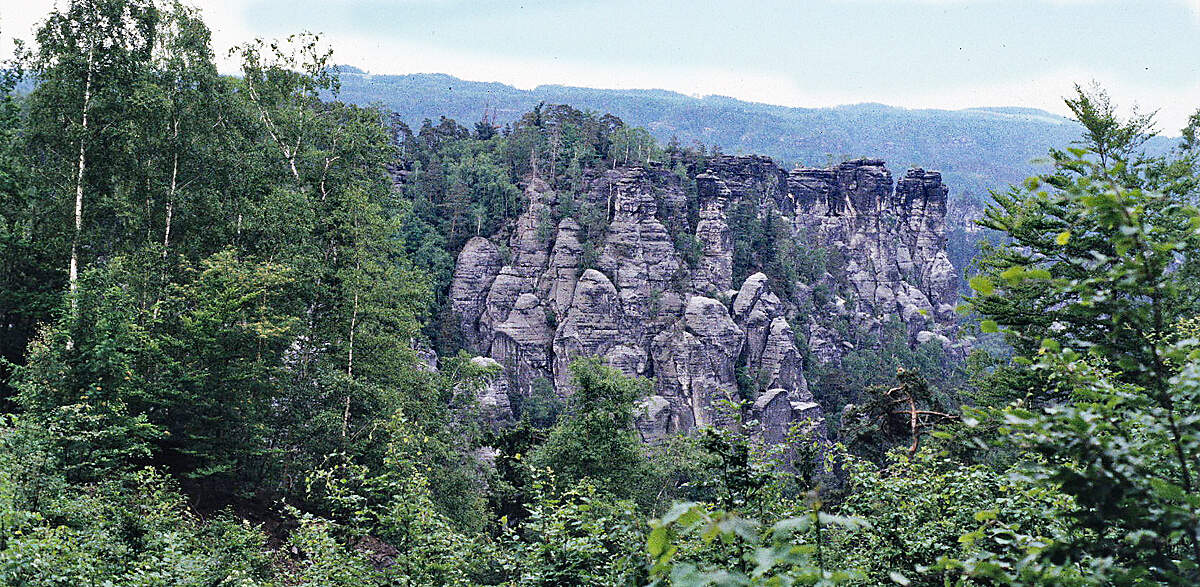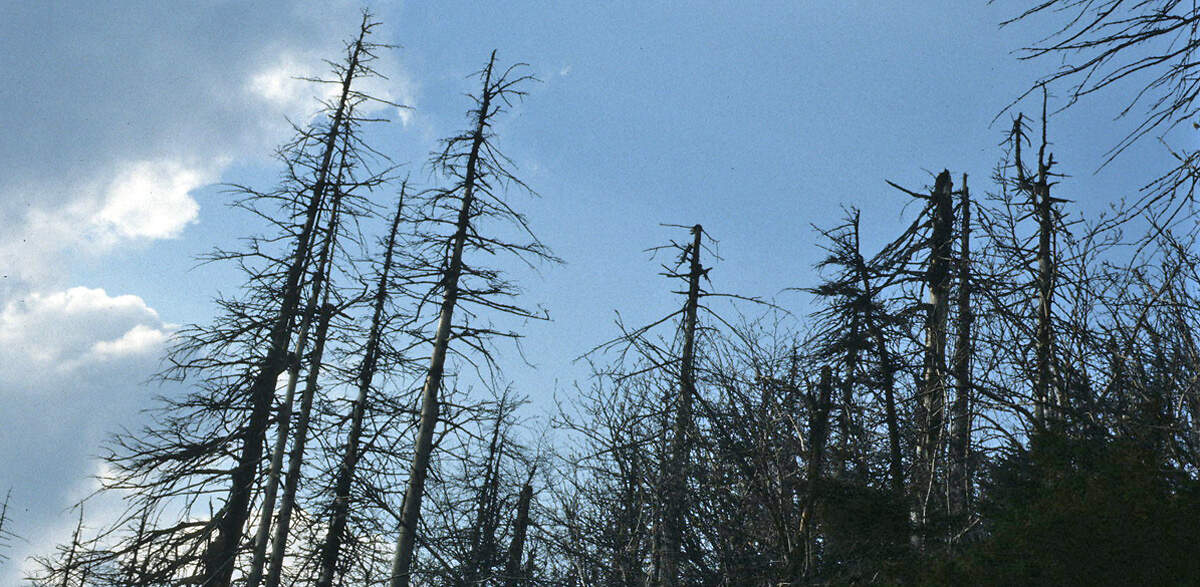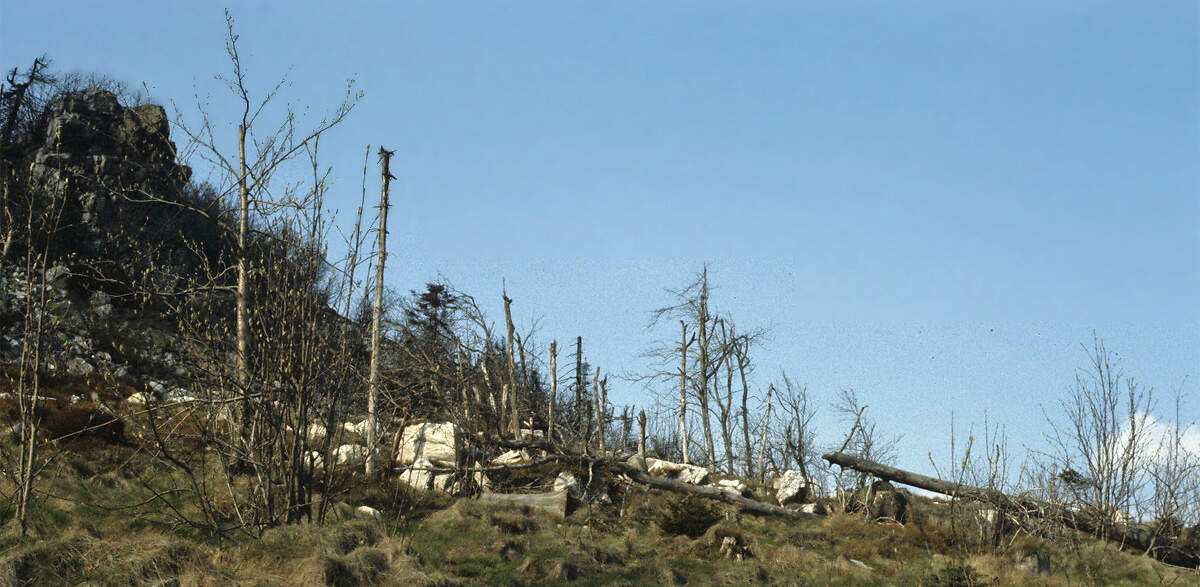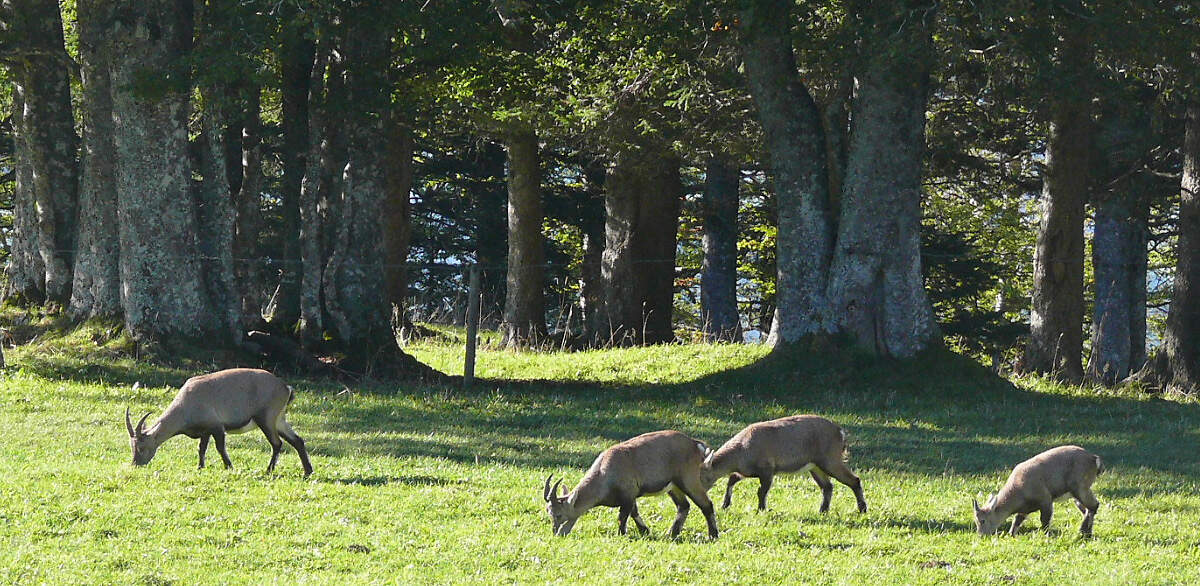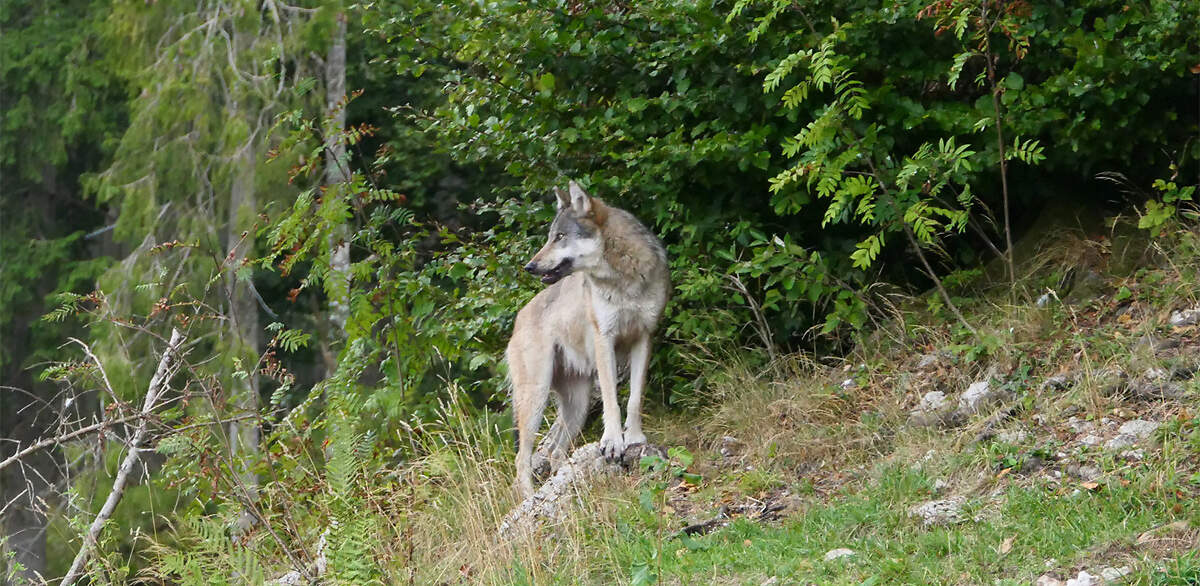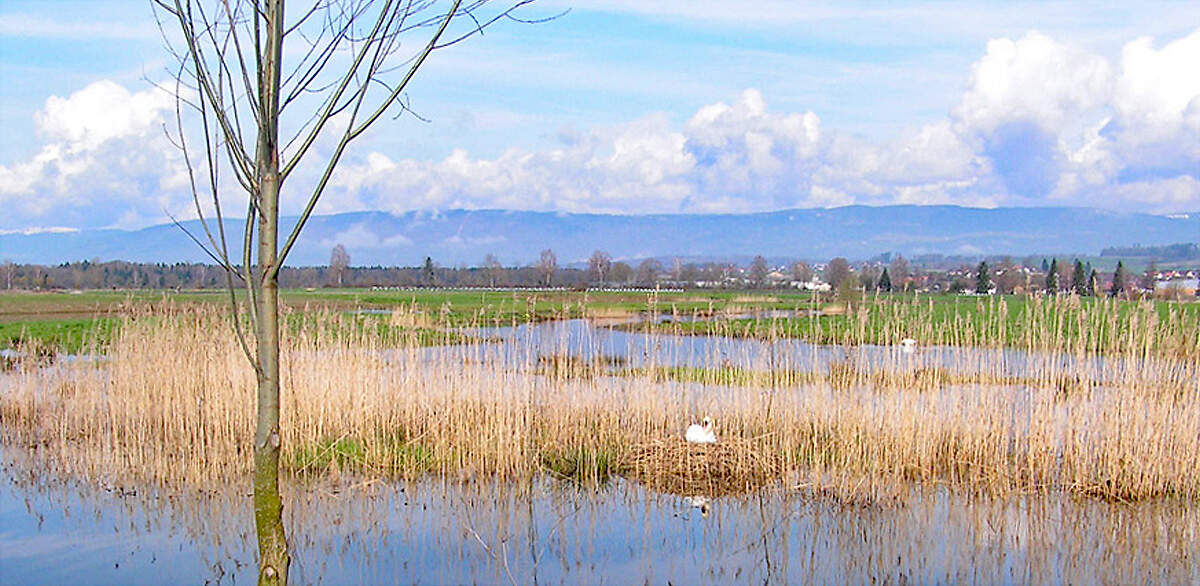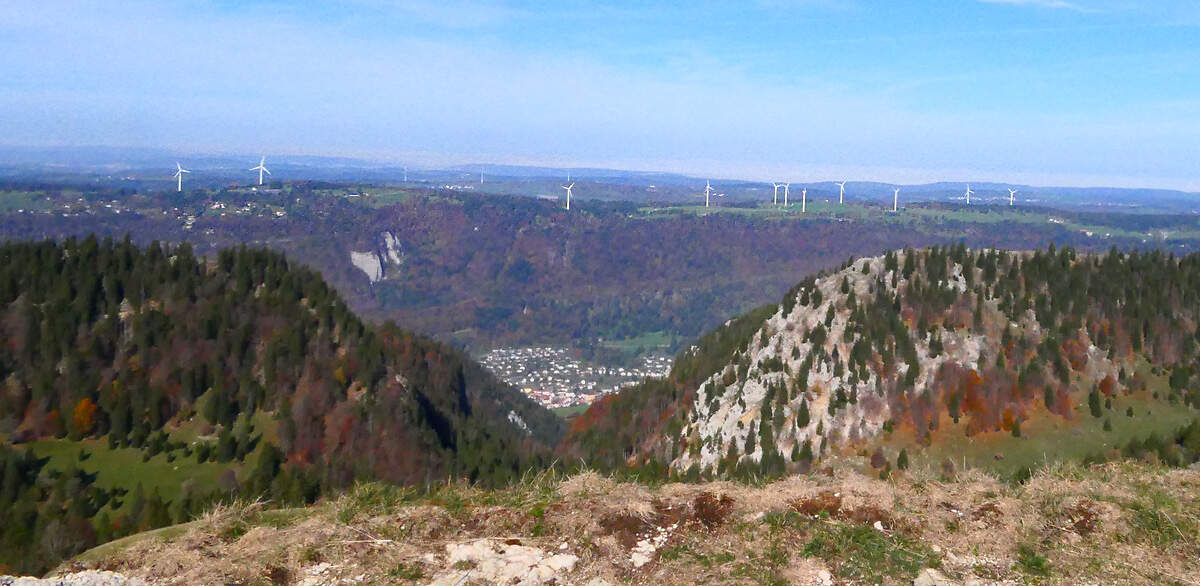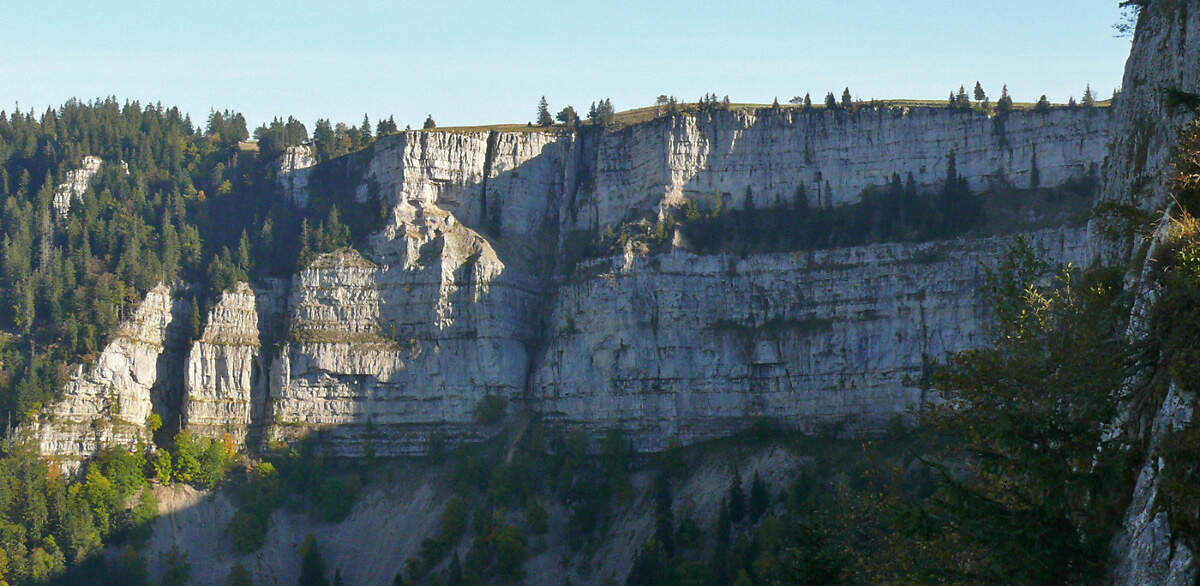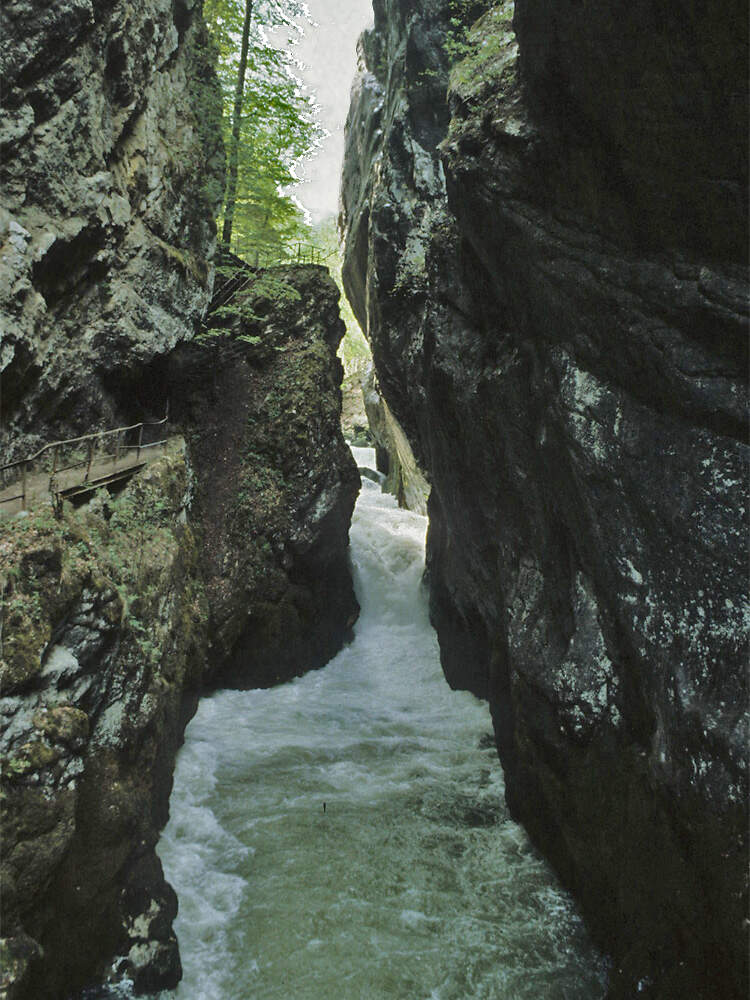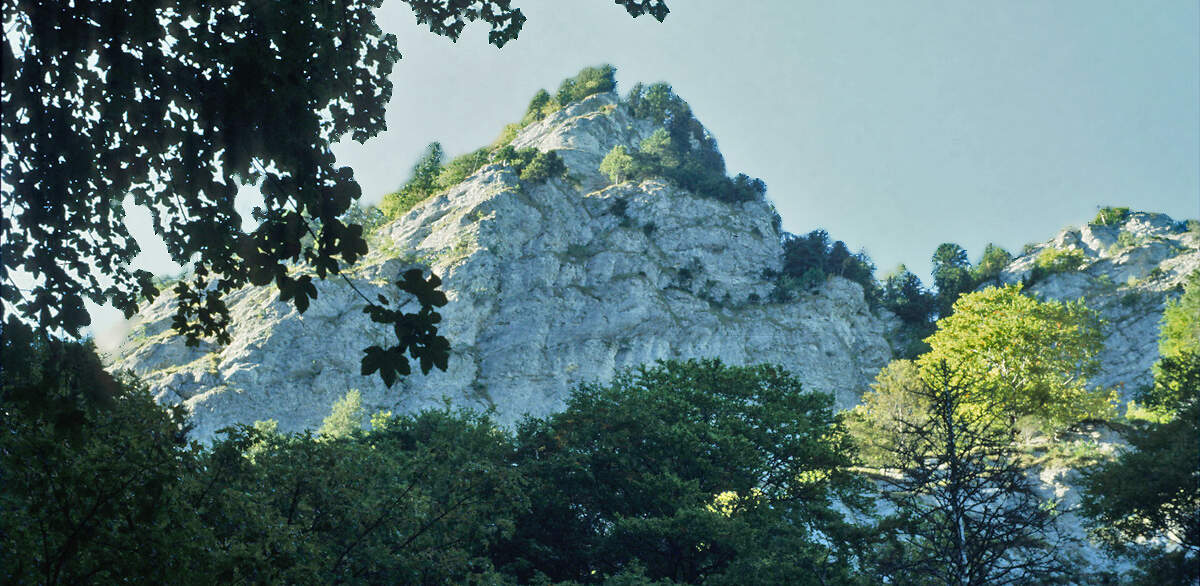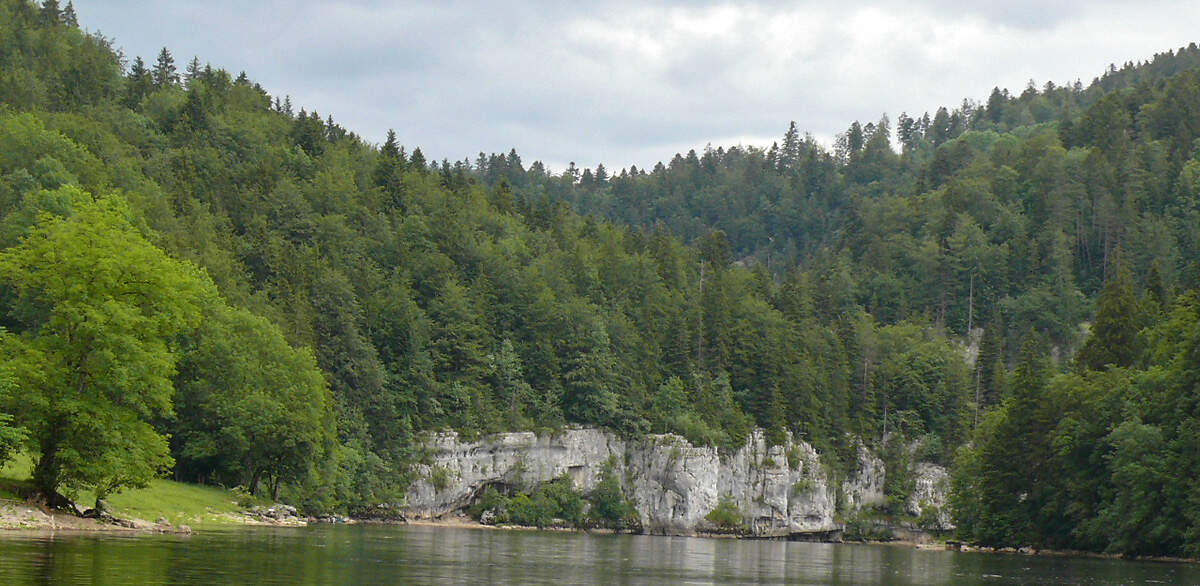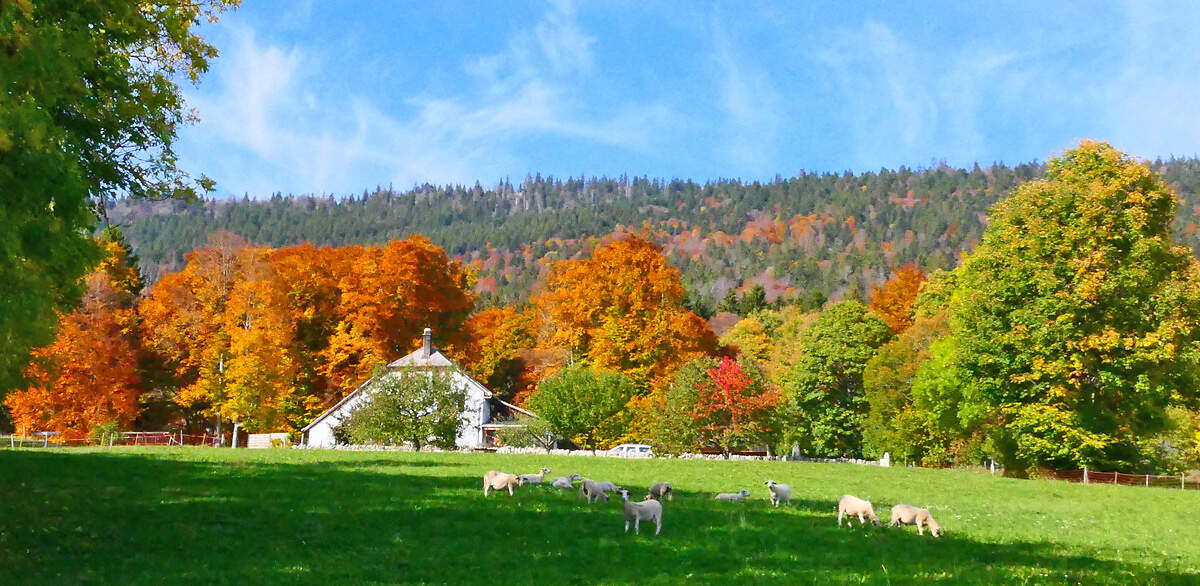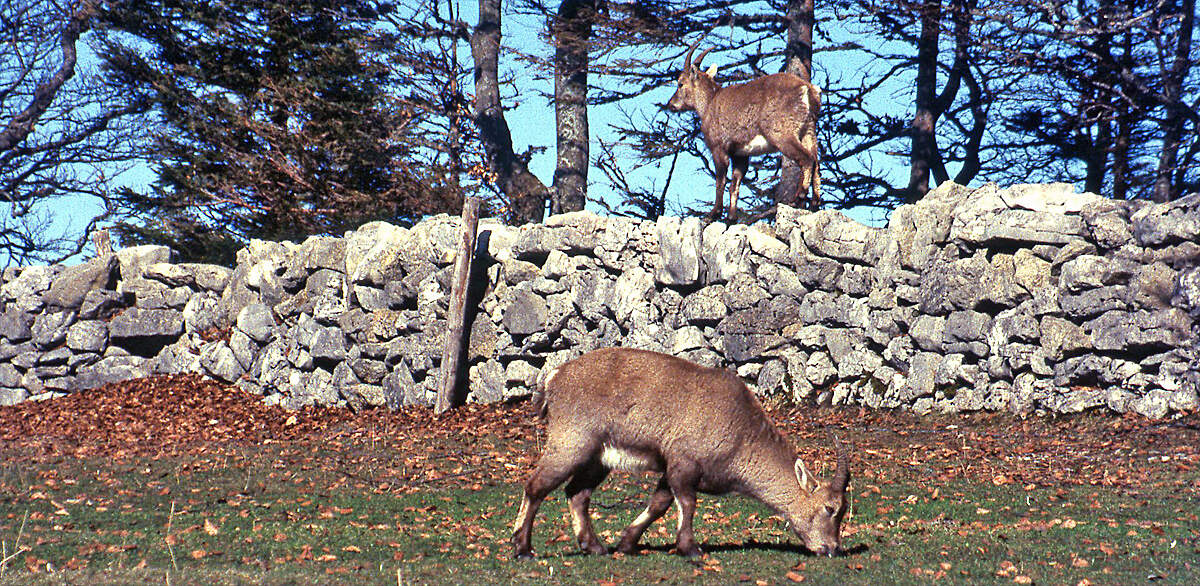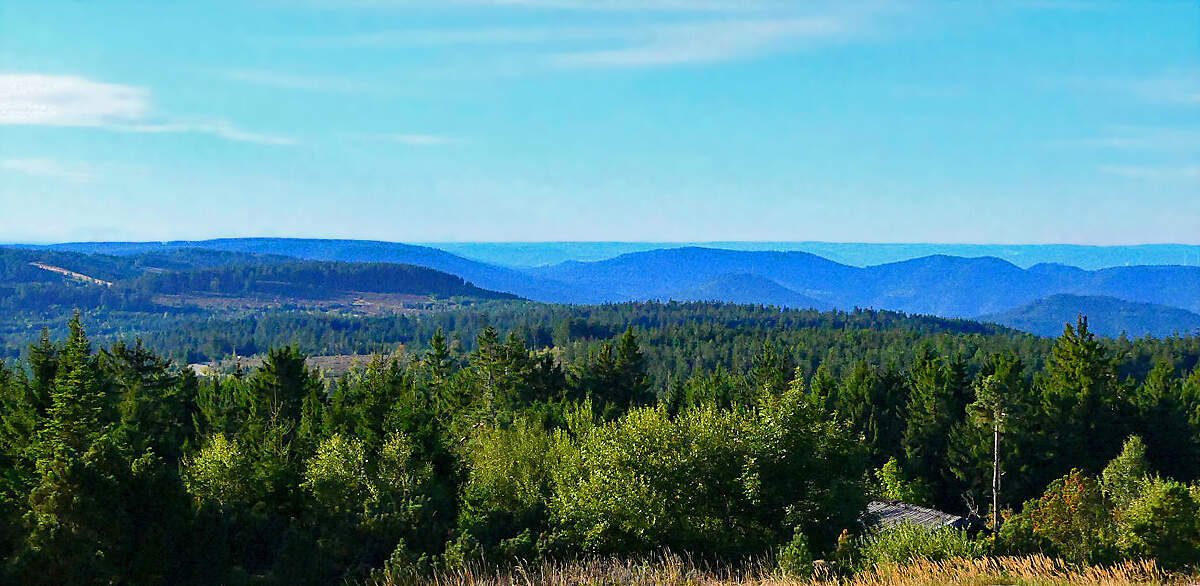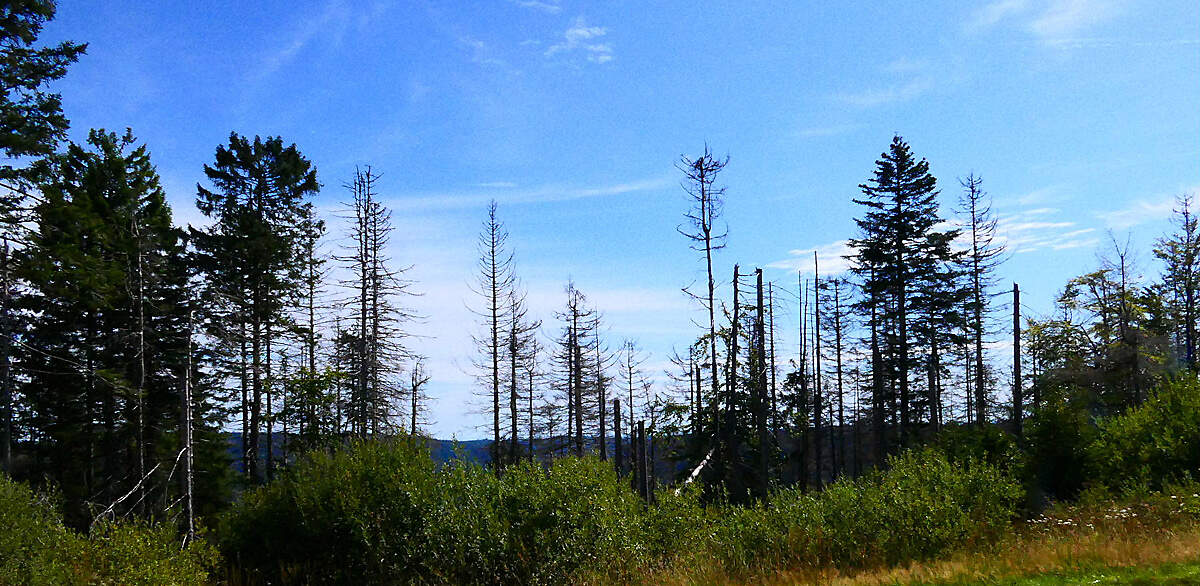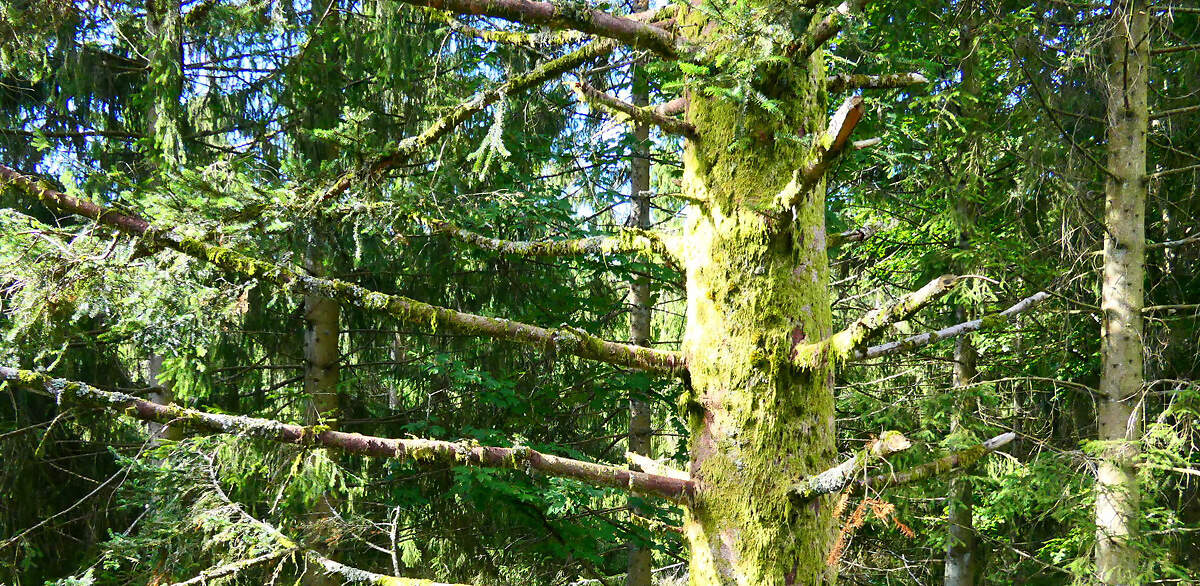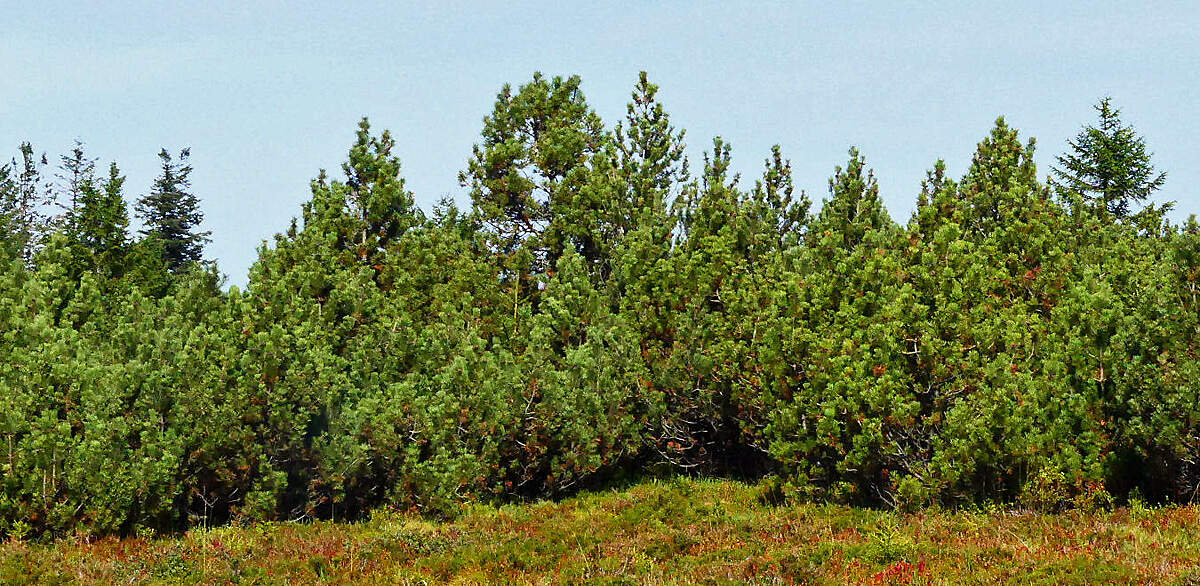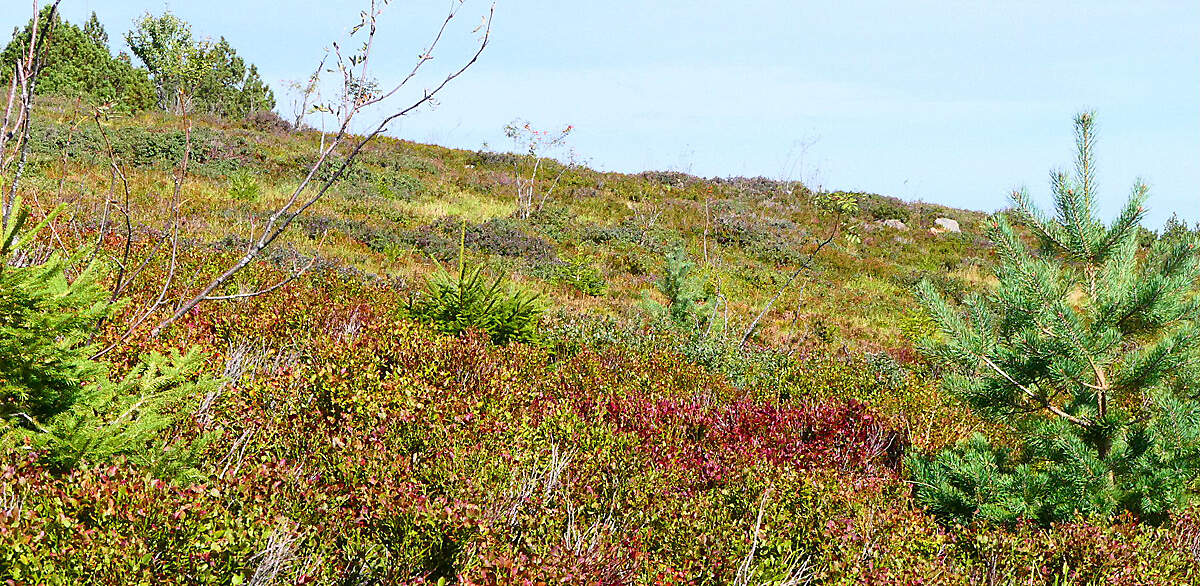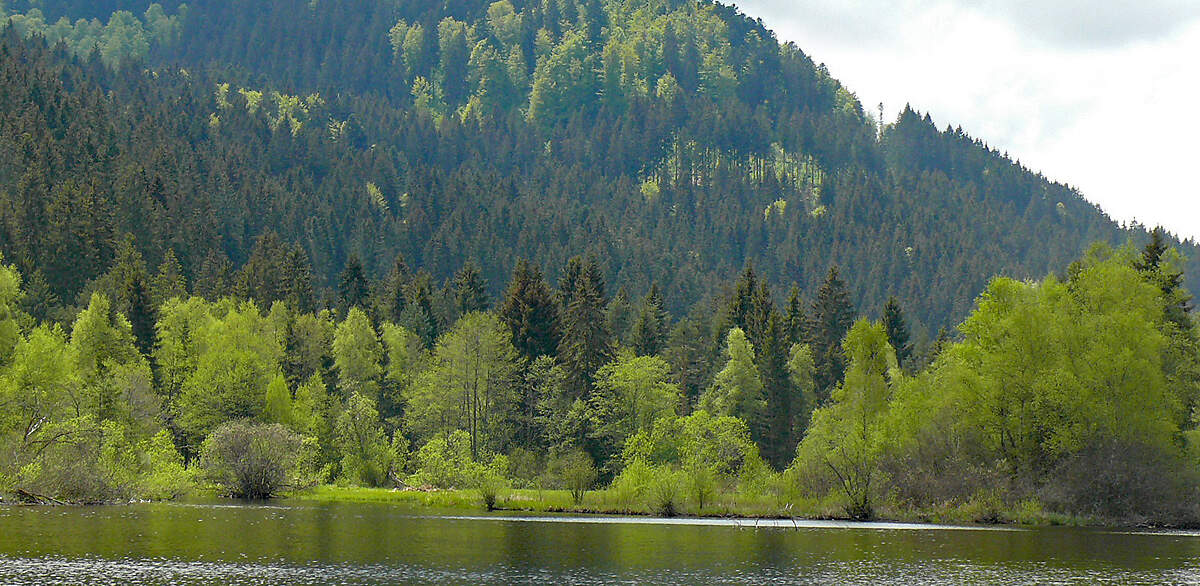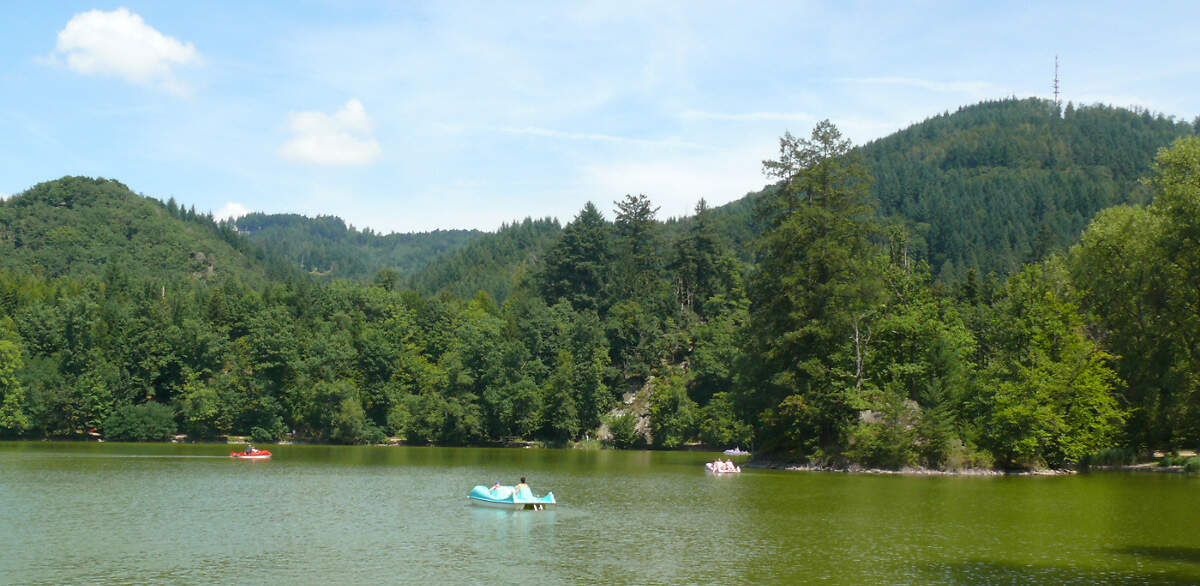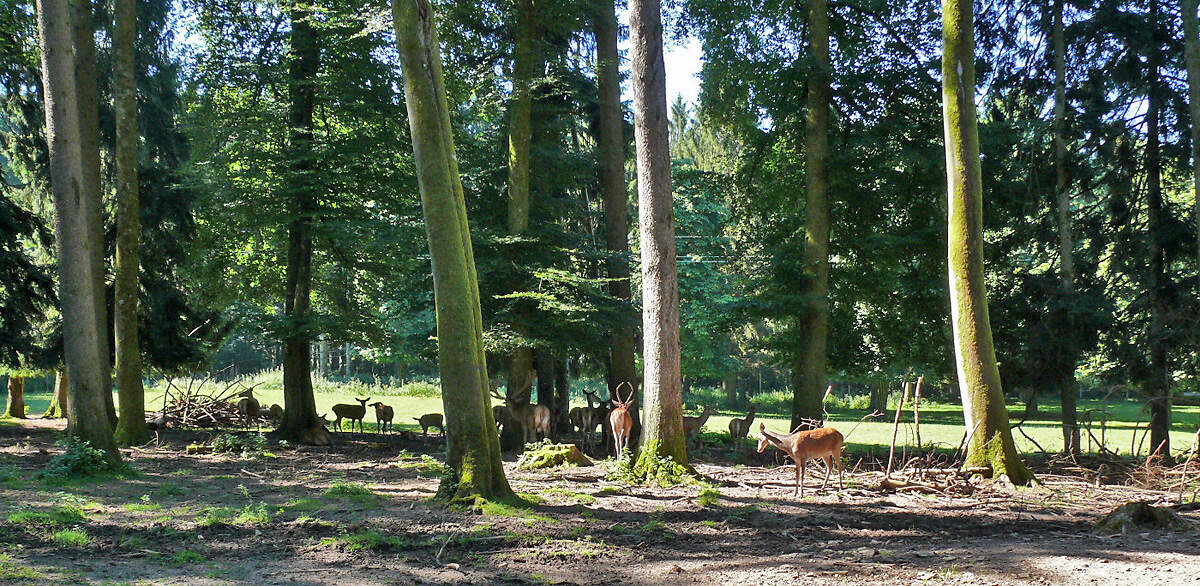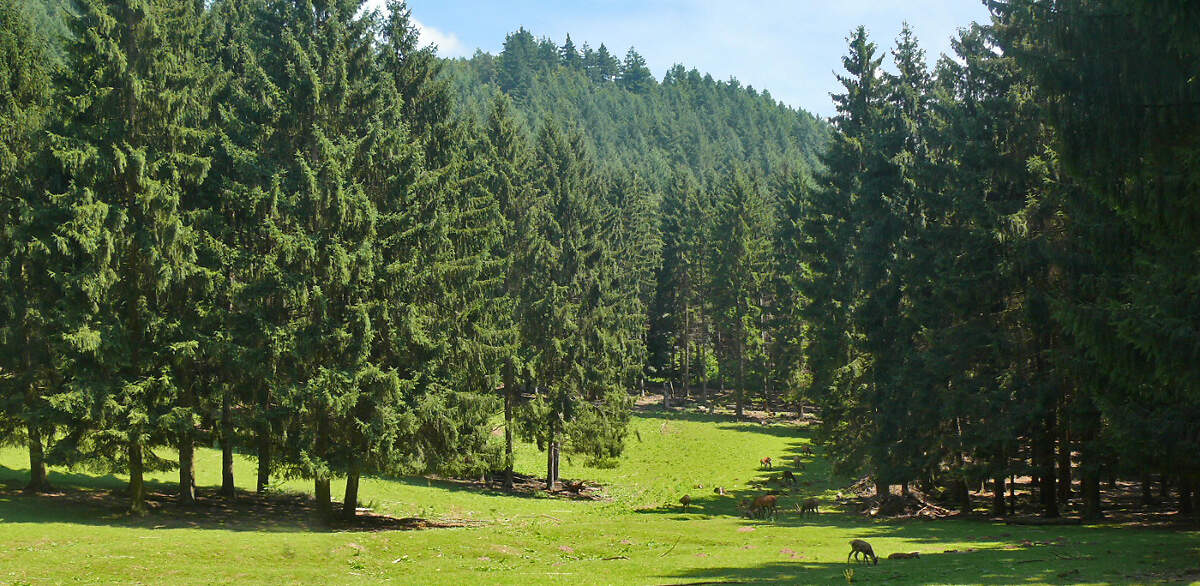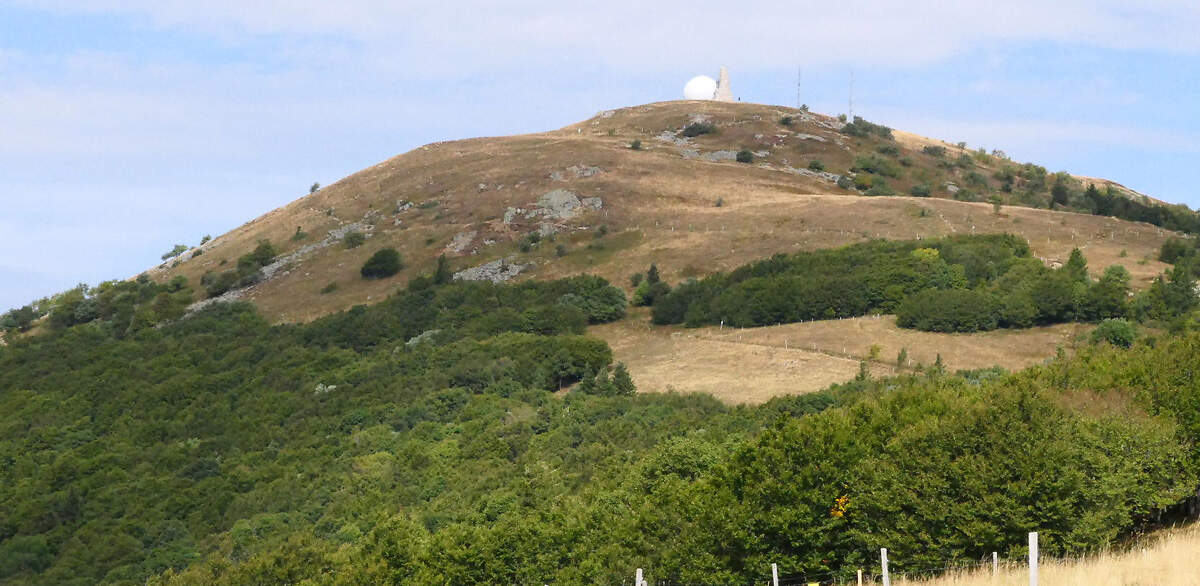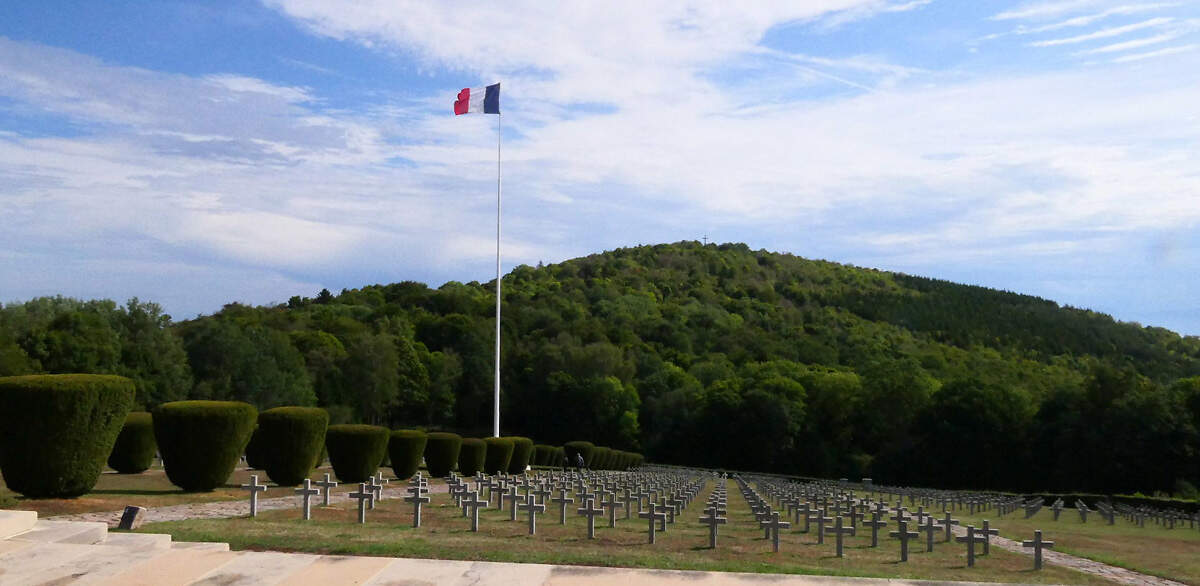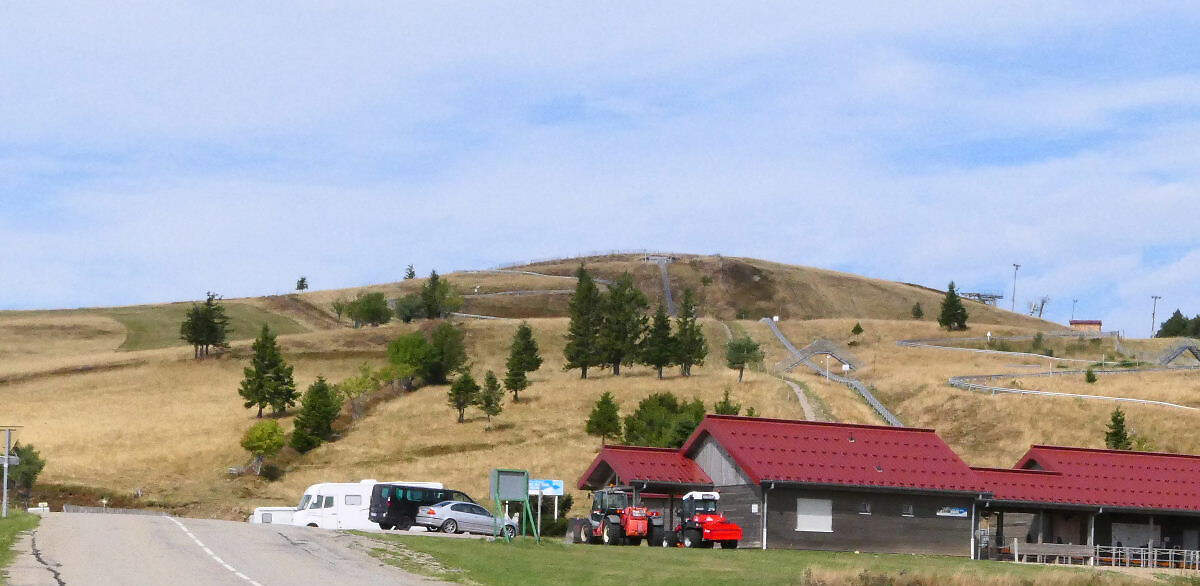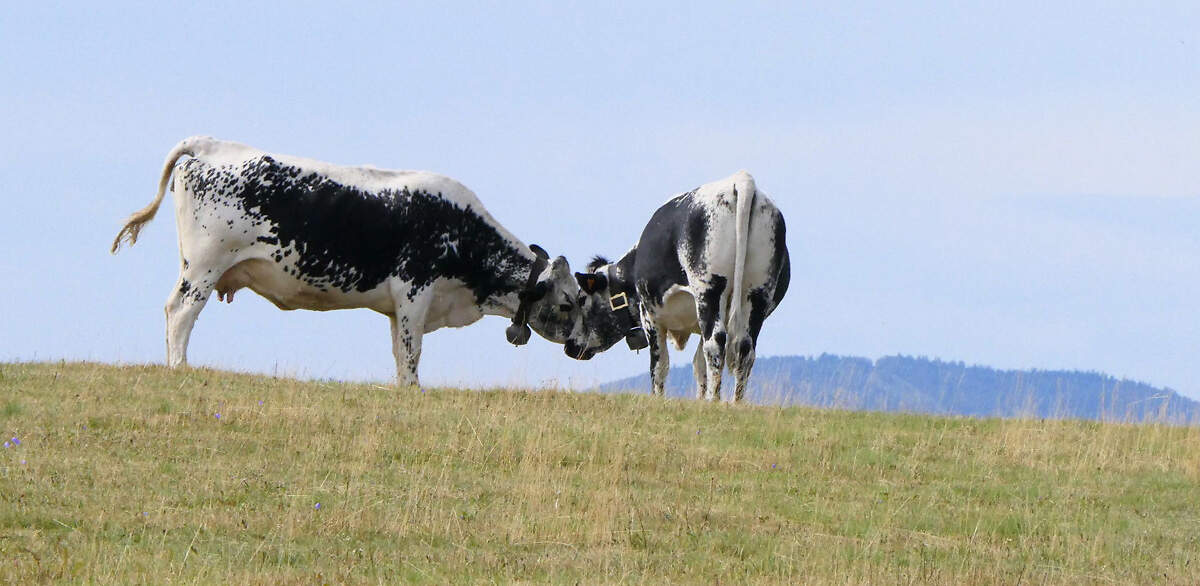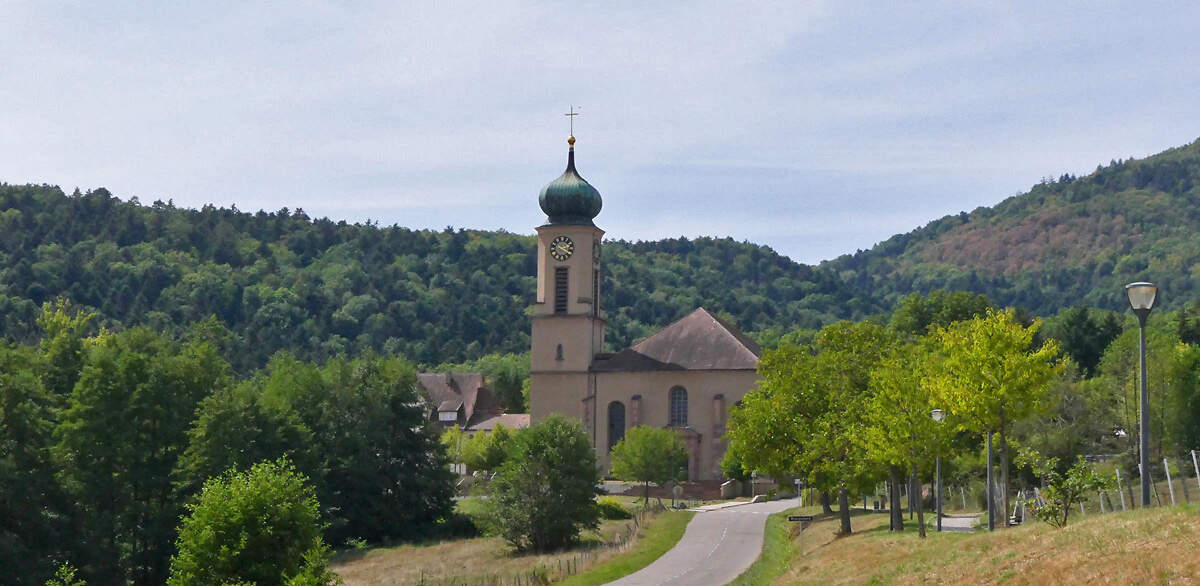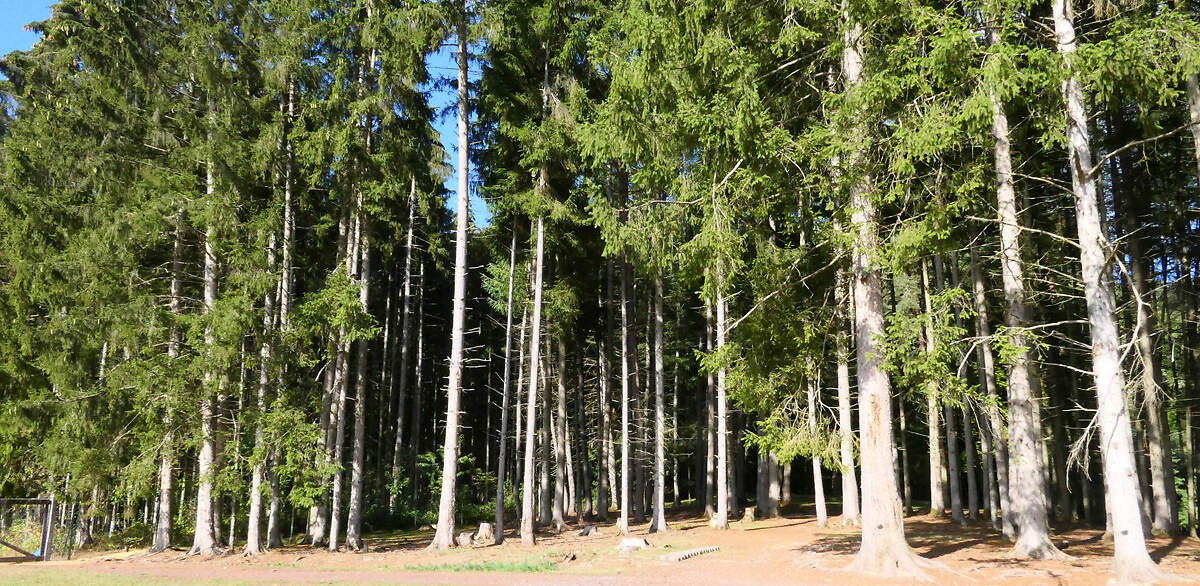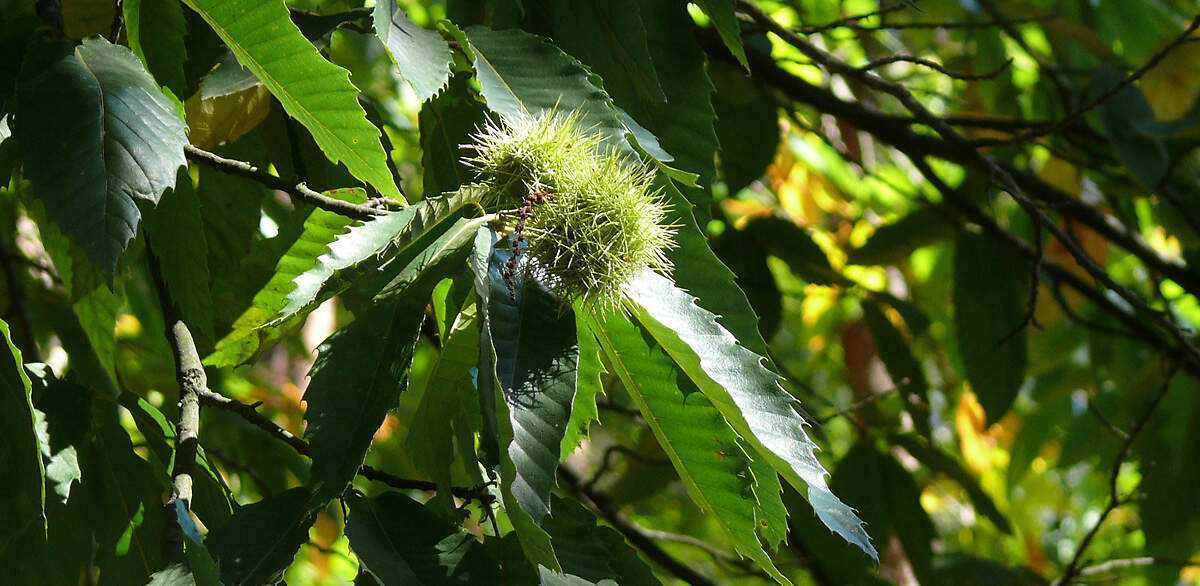KOMPOSCH, B. (2014)
Verbreitung und Habitatnutzung des Europäischen Bibers (Castor fiber Linnaeus, 1758) in der Steiermark sowie Vorschläge für ein zukünftiges Management.
94 Seiten, 14 Tabellen, 69 Abbildungen. Masterarbeit, Universität für Bodenkultur Wien.
Zusammenfassung:
Seit der Mitte des 20. Jahrhunderts werden in weiten Teilen Europas erfolgreich Wiederansiedelungsprogramme für den im 19. und 20. Jahrhundert fast völlig ausgerotteten Europäischen Biber (Castor fiber) durchgeführt. In Österreich, wo der autochthone Biberbestand 1869 als erloschen galt, ist die Art mittlerweile wieder in allen Bundesländern präsent. Der aktuelle Gesamtbestand wird auf knapp 5000 Tiere geschätzt. Während die Vorkommen in den meisten Bundesländern gut dokumentiert sind, standen umfassende Erhebungen für die Steiermark bislang aus. Im Rahmen der gegenständlichen Arbeit wurde untersucht, welche Gewässer in der Steiermark heute bereits vom Biber besiedelt werden, wie groß der aktuelle steirische Bestand ist, welche Habitatfaktoren einen Einfluss auf das Vorkommen des Bibers haben und welche Bereiche der Steiermark grundsätzlich vom Biber besiedelbar sind. Als Grundlagen für die Beantwortung dieser Fragen werden auch die historische Verbreitung des Bibers in der Steiermark und der bisherige Ablauf der Wiederbesiedlung dargestellt.
In den Wintern 2012/2013 und 2013/2014 wurden insgesamt 413 km Fließgewässer in den Einzugsgebieten von Mur, Lafnitz und Raab auf Anwesenheitszeichen des Bibers hin untersucht. Anhand verschiedener Aktivität anzeigenden Zeichen wurden Einzel-/Paarreviere und Familienreviere abgegrenzt. Für die Bestandsschätzung wurde die Anzahl der Einzel-/Paarreviere mit dem Faktor 1,5 und die Anzahl der Familienreviere mit dem Faktor 5 multipliziert. Zudem wurden mehrere aquatische und terrestrische Habitatstrukturen im Gelände erhoben und ihre Bedeutung für das Vorkommen des Bibers in einem Generalisierten Linearen Gemischten Modell (GLMM) geprüft. Um potenziell für den Biber geeignete Gewässer bzw. Gewässerabschnitte in der Steiermark ausweise n zu können, wurde eine GIS-basierte Habitatmodellierung anhand von flächendeckend vorhandenen naturräumlichen Daten durchgeführt. Aktuell besiedelt der Biber das Lafnitz-, Feistritz-, Raab-, Sulm- , Laßnitz- und Kainachtal sowie das Untere Murtal, das Leibnitzer und das Grazer Feld. Entlang der Lafnitz dringt er bis ins Steirische Randgebirge auf rund 600 m Seehöhe vor. In den Nordalpen konnten bislang an zwei Stellen Bibernachweise erbracht werden: an der Enns bei Hieflau und an der Salza südlich von Mariazell. In Summe wurden an 2331 Punkten im Gelände Anwesenheitszeichen des Bibers aufgenommen. 63 Biberreviere wurden abgegrenzt: 23 im Einzugsgebiet der Mur, 33 im Einzugsbiet der Lafnitz und 7 im Einzugsgebiet der Raab. Der geschätzte Gesamtbestand beträgt 220 Tiere. Die Längen der Reviere variieren zwischen 300 m und 6,5 km. Der durchschnittliche Abstand zwischen den Revieren beträgt 4,2 km. An der Mur sind die Reviere signifikant länger und die Abstände zwischen den Revieren signifikant größer als jene an der Lafnitz. Mit Hilfe eines Generalisierten Linearen Gemischten Modells konnte u. a. gezeigt werden, dass die Wahrscheinlichkeit für das Vorhandensein eines Revierzentrums mit der Breite des Ufersaums zunimmt und Revierzentren seltener an verbauten Gewässerabschnitten liegen. Die Habitatmodellierung ergibt, dass die Mehrzahl der Gewässer des Vorlandes sowie alle Becken - und Tallandschaften potenziell als Lebensraum für den Biber geeignet sind.
Die Ergebnisse der vorliegenden Arbeit sollen die Grundlage für ein zukünftiges Bibermonitoring und insbesondere für ein – aufgrund des hohen Konfliktpotenzials mit verschiedenen anthropogenen Nutzungsansprüchen erforderliches – naturschutzkonformes Bibermanagement darstellen. Unter Einbeziehung der Erfahrungen in Bayern, der Schweiz sowie in den einzelnen österreichischen Bundesländern werden Vorschläge für ein entsprechendes Management der Art in der Steiermark ausgearbeitet und präsentiert.
komposch-biblio
SPAGNESI, M. & DE MARINIS, A. M. (2002)
Mammiferi d'Italia.
Quaderni di Conservazione della Natura No. 14
312 Seiten, mit Zeichnungen von Umberto Catalano, Verbreitungskarten.
Inhalt:
Das Werk enthält Daten zu den 119 in Italien wild vorkommenden Säugetierarten.
Volltext (PDF)
spagnesi-biblio
THISSEN, J. B. M. & HOLLANDER, H. (1996)
Status and distribution of mammals in the Netherlands since 1800.
Hystrix 8(1-2). DOI:10.4404/hystrix-8.1-2-4098
Abstract:
The recent and historical status and distribution of 64 Dutch wild mammals are described. In the last two centuries there have been a lot of changes in this field. Some species are increasing, but others are decreasing. Greater horseshoe bat Rhinolophus ferrumequinum (in 1984), lesser horseshoe bat Rh. hipposideros (in 1983), wolf Canis lupus (in 1869), otter (in 1988, but a very small number of solitary individuals is still present) and Eurasian beaver (in 1826, but reintroduced in 1988) got extinct.
Volltext (PDF)
thissen-biblio
Gebirge (2): Mittelgebirge in Zentraleuropa
Allgemeines
|
|
Mittelgebirge haben in unserem Gebiet eine Höhe bis zu etwa 1'800 m. Sie sind nicht vergletschert und meistens bis in die höchsten Lagen bewaldet. Im deutschen Sprachraum gehören dazu alle Gebirge mit Ausnahme der Alpen, wie Bayerischer Wald, Böhmerwald, Eifel, Elbsandsteingebirge, Elstergebirge, Erzgebirge, Fichtelgebirge, Fränkische Alb, Harz, Hunsrück, Hoher Meissner, Knüll, Pfälzer Wald, Odenwald, Rhön, Rothaargebirge, Schwäbische Alb, Schwarzwald, Sudeten, Taunus, Thüringer Schiefergebirge, Thüringer Wald, Vogelsberg, Zittauer Gebirge. Auch die Ardennen, die Vogesen, das Massif Central und der Jura sind Mittelgebirge. VegetationBis etwa 1'000 m.ü.M. stehen Buchenwälder, ab 700 m.ü.M. auch Tannen-Rotbuchenwälder und natürliche Fichtenwälder. In vielen Mittelgebirgen wurden die natürlichen Wälder durch Fichtenforste ersetzt. Diese Monokulturen sind besonders anfällig für das sogenannte "Waldsterben", das in den 1980er Jahren eines der bedeutendsten Umweltthemen war. Als Hauptursache für die Waldschäden, die sich in Schäden am Wurzelsystem und Nadelverlust bzw. bei Laubbäumen in Auflichtungen des Kronenbereichs manifestieren, wurde Luftverschmutzung durch Schadstoffe aus Industrie und Bergbau und dadurch verursachter saurer Regen festgemacht. Geschädigte Bäume sind auch anfälliger für Schädlinge wie Borkenkäfer, von denen der Buchdrucker (Ips typographus) der wichtigste ist. Einige der dem Wald zusetzenden Schadfaktoren wurden seit den 1980er Jahren eliminiert oder verringert. Als Folge von durch den Klimawandel bedingter Erwärmung und zunehmender Trockenheit, was namentlich den Rotbuchen zu schaffen macht, sowie häufiger auftretenden Stürmen, leidet der Wald aber weiterhin. Besonders stark betroffen sind z.B. Harz, Riesengebirge, Erzgebirge, Jeschkengebirge, Thüringer Wald und Sächsische Schweiz. TierweltDas Säugetierspektrum ist ähnlich dem der Alpen. Ausgesprochene Hochgebirgstiere, wie Schneemaus, Schneehase, Alpensteinbock und Alpenmurmeltier fehlen, außer an einzelnen Stellen, wo die beiden letzteren angesiedelt wurden. Die Wildkatze ist in den Mittelgebirgen weit verbreitet. Die bisweilen "Juraviper" genannte Aspisviper kommt im Süden und Westen noch an vielen Stellen vor. Die Kreuzotter hat dagegen ihre Hauptverbreitung im Norden und Osten. Wo beide Arten vorkommen, bevorzugt die Kreuzotter die höheren Lagen. Alpengemse und Eurasischer Luchs waren in den Mittelgebirgen in der Regel ausgerottet, wurden aber mit Erfolg wiederangesiedelt. Wölfe werden namentlich in Frankreich wieder festgestellt, der im 19. Jahrhundert ausgerottete Braunbär fehlt noch. Das Massif Central ist ein Schwerpunkt für den Gänsegeier, auch Schmutzgeier nisten hier. Stellenweise wurden Sikahirsch und Mufflon angesiedelt, wobei es heute teilweise Bestrebungen gibt, diese gebietsfremden Arten wieder zu eliminieren. Typische ZootiereWolf, Rotfuchs, Steinmarder, Baummarder, Hermelin, Iltis, Dachs, Fischotter, Europäische Wildkatze, Eurasischer Luchs, Wildschwein, Rothirsch, Reh, Gemse, Eichhörnchen, Siebenschläfer, Gartenschläfer. Haselhuhn, Auerhuhn, Wachtel, Gänsegeier, Schmutzgeier, Schwarzmilan, Wespenbussard, Mäusebussard, Wanderfalke, Turmfalke, Ringeltaube, Sperlingskauz, Uhu, Waldkauz, Waldohreule, Raufusskauz, Schwarzspecht, Feldlerche, Wasseramsel, Rotkehlchen, Sommergoldhähnchen, Hausrotschwanz, Amsel, Mönchsgrasmücke, Mauerläufer, Kleiber, Kolkrabe, Aaskrähe, Eichelhäher, Tannenhäher, Elster, Star, Haussperling, Erlenzeisig, Grünfink, Buchfink, Stieglitz, Fichtenkreuzschnabel, Gimpel, Goldammer. Mauereidechse, Zauneidechse, Smaragdeidechse, Aspisviper, Kreuzotter, Erdkröte, Grasfrosch, Feuersalamander, Bergmolch. |
Jura
|
|
Der Jura im engeren Sinn verläuft parallel zu den Alpen. Er liegt nordwestlich des Schweizer Mittellandes, teils auf schweizerischem, teils auf französischem Staatsgebiet. Im Süden wird er von der Rhone, im Norden vom Rhein begrenzt. Er besteht überwiegend aus Kalkgestein, ferner aus Mergel- und Tonschichten. Er ist im Wesentlichen ein Faltengebirge, im Norden, in den Kantonen Aargau, Basel-Land und Jura sowie im angrenzenden Frankreich, gibt es aber einen ungefalteten Teil, den Tafeljura, der sich in geologisch gleich aufgebauten Mittelgebirgen in Schaffhausen (Randen) und Deutschland (Klettgau, Schwäbische und Fränkische Alb) fortsetzt. Der Tafeljura ist reich an Fossilien (Muschelkalk, Dinosaurier). Der Höchste Gipfel ist mit 1'720 m. ü. M. der Crêt de la Neige, der in der Nähe von Genf auf französischem Staatsgebiet (Département Ain) liegt. Der höchste Gipfel in der Schweiz ist der 1679 m hohe Mont Tendre im Kanton Waadt. In Mittelgebirgen gibt es Kare (französisch cirques), d. h. kesselförmige, von steilen Felswänden begrenzte Eintiefungen an den Bergflanken, die von kurzen Gletschern ausgeschürft worden sind. Einer der bekanntesten Kessel im Schweizer Jura ist der Creux du Van im Val de Travers. Dieser ist wahrscheinlich während der letzten Eiszeit entstanden. Er ist etwa 1'200 m breit und 500 m tief. Seine rund 160 m senkrecht abfallen Felswände ind insgesamt etwa 4 km lang. Andere, für Kalkgebirge typische Formationen sind Höhlen und Dolinen, die durch die Lösung von verkarstungsfähigem Gestein, und enge Schluchten, die durch mechanische Erosion enstanden sind. Der Französische Jura ist eines der höhlenreichsten Gebiete Europas. Bislang sind über 5'000 kleinere und größere Höhlen erforscht, das längste System weist eine Länge von über 40 km auf. Im Schweizer Jura ist namentlich die touristisch erschlossene Feengrotte von Vallorbe bekannt, ein gegen 3 km langes System von Tropfsteinhöhle und Gängen, aus dem die Orbe entspringt. Wegen des wasserdurchläßigen Untergrunds ist das Gewässernetz des Juras bescheiden. Es gibt nur wenige natürliche Seen, der größte in der Schweiz ist der Lac de Joux mit 9.6 km², der größte in Frankreich der Lac de Saint-point mit 5.2 km² Fläche. Der bedeutendste Fluss ist der Doubs mit 453 km Länge. Im Zuge der Auffaltung des Juras haben manche Flüße enge Durchbruchstäler, sogenannte Klusen gebildet. Wohl die schönste dieser Schluchten ist die Gorge de l'Areuse (ca. 450-720 m. ü. M.) im Neuenburger Jura. Die Areuse stürzt im Bereich der langgezogenen Schlucht über mehrere Wasserfälle 270 Meter in die Tiefe. TierweltDer letzte Braunbär im Schweizer Jura wurde 1855 erlegt. Der Luchs wurde hier vermutlich bereits im 18. Jahrhundert ausgerottet, im französischen Jura gab es noch Sichtungen bis um 1870. Von 1972-1975 wurden offiziell 2 Paare und vermutlich 6 weitere Tiere illegal angesiedelt. Heute (2022) liegt der Gesamtbestand im schweizerischen und französischen Jura bei ca. 140 Individuen. Im Gegensatz zum Luchs war die Wildkatze im Jura nie ausgestorben. Aus der Schweiz war sie allerdings um 1960 weitgehend verschwunden. Ihre erneute Ausbreitung wurde gefördert durch die Ansiedlung von Wildfängen aus dem Burgund und von Nachzuchten aus schweizerischen Tierparks. Der Rothirsch wurde um die Mitte des 19. Jahrhunderts im Jura ausgerottet. Aus der Alpenpopulation wanderten ab dem letzten Drittel des 20. Jahrhunderts immer wieder einzelne Tiere ein. Verstärkt war dies ab etwa 2006 der Fall. Gebietsweise ist seitdem eine exponentielle Zunahme der Bestände zu beobachten, was dazu führte, dass 8 Schweizer Kantone und 3 französische Departemente zusammen mit Jagdverbänden ein Interreg-Projekt ins Leben riefen, das darauf abzielt, Bestandsentwicklung, Wanderungen und Waldschäden zu beobachten und Grundlagen für die Bewirtschaftung der Art zu liefern. Die Gemse verschwand während des Neolithikums, eventuell der Bronzezeit. 1950-62 wurden insgesamt 84 in den Alpen gefangene Gemsen freigelassen, heute ist die Art wieder flächendeckend vorhanden und wird bejagt. 1965 wurden am Creux du Van 17 der bereits in der Altsteinzeit aus dem Jura verschwundenen Steinböcke angesiedelt. Die Kolonie konnte sich halten, hat sich aber nicht ausgedehnt. Der Bestand der wiederholt, hauptsächlich ab Ende der 1960er-Jahre ausgewilderten Alpenmurmeltiere stagnierte bis zur Jahrtausendwende. Danach nahm er zu, und das Artareal reicht heute vom Chasseral im Berner bis zum Noirmont im Waadtländer Jura. Das Areal des Auerhuhns ist seit den 1970er-Jahre im Jura um mehr als die Hälfte geschrumpft. Im nördlichen und zentralen Jura ist die Art praktisch verschwunden. Das Birkhuhn ist seit etwa einem halben Jahrhundert ausgestorben. Das Haselhuhn hatte im Nordosten Arealverluste zu verzeichen, ist aber vom Chasseral Richtung Süden in geeigneten Wälder noch fast überall vorhanden. In ackerbaulich genutztem Gelände zwischen 400-1'200 m Höhe ist die Wachtel noch weit verbreitet. Der vielfältig strukturierte Nadelholzbestände bewohnende Sperlingskauz konnte sein Areal im Süden des Juras seit den 1990er-Jahren nach Norden und auch in tiefere Lagen ausdehnen. Dagegen zeichnet sich beim im Kettenjura noch weitverbreiteten Raufusskauz ein Rückgang ab. Sehr erfolgreich war ein 1972 begonnenes Wiederansiedlungsprogramm für den Uhu, der heute wieder den größten Teil des Juras besiedelt. Der um die Mitte des 19. Jahrhunderts regional ausgestorbene Steinadler wanderte spontan ein. 1994 wurde die erste Brut im französischen, 2009 im Solothurner, 2014 im Berner und 2020 im Neuenburger Jura verzeichnet, und die Population wächst ist im ganzen Kettenjura kontinuierlich. 2021 wurde erstmals ein Steinadler von einer Windturbine getötet, was NGOs veranlasste ein Moratorium für den Bau von Windkraftanlagen in sensiblen Regionen zu fordern. |
Schwarzwald
|
|
Der Schwarzwald ist Deutschlands höchstes und umfangreichstes Mittelgebirge. Er entstand ab dem Eozän, also vor rund 50 Millionen Jahren, als Folge der Absenkung des Oberrheingrabens und der damit verbundenen Aufwölbung der Grabenschultern. Er besteht aus einem kristallinen Grundgebirge (Gneise, Granit), das teilweise von einer Deckschicht aus Buntsandstein überlagert wird. Während der beiden letzten Eiszeiten war er stark vergletschert. Relikte dieser Vergletscherung sind einige Karseen wie z.B. der Mummelsee. Der Schwarzwald erstreckt sich entlang des Oberrheins vom Hochrhein, also der Grenze zur Schweiz, bis in die Gegend von Karlsruhe über eine Distanz von etwa 160 km. Er bedeckt eine Fläche von rund 6'000 km² und grenzt Im Osten an die aus Muschelkalk bestehenden Landschaften von Gäu, Baar und Klettgau. Wie bei seinem linksrheinischen Gegenstück, den Vogesen, befinden sich die höchsten Erhebungen des Schwarzwalds dem Rhein zugewandt im Süden. Es sind dies der Feldberg (1'493 m. ü. M.), das Herzogenhorn (1’416 m. ü. M.) und der Belchen (1’414 m. ü. M.). Der höchste Berg im mittleren Schwarzwald ist der Kandel (1'241 m. ü. M.) bei Waldkirch, im Nordschwarzwald die Hornisgrinde (1'164 m. ü. M.) in der Ortenau. Weil die relativ weiche Deckschicht aus Buntsandstein im Norden mächtiger ist, bildeten die Gletscher dort viel mehr Kare als im Süden. Am Ende der letzten Eiszeit gab es mi Nordschwarzwald 129 Kare, im Südschwarzwald nur deren 20. Heute verbeiben noch 9 Karseen im Nord- und 3 im Südschwarzwald. Der bekannteste im Norden ist der 3.7 ha große und 18 m tiefe Mummelsee, der größte natürliche Schwarzwaldsee ist der im Süden gelegene Titisee mit einer Fläche von 107 ha und einer Tiefe bis 39 m. Dieser wird an Fläche übertroffen durch den Schluchsee, einen Aufstau der Schwarza von 517 ha. Die längsten Fließgewässer (>90 km) sind die Enz, ein Nebenfluss des Neckars, Kinzig, Elz und Nagold, die der Oberrhein zufließen, und die in den Hochrhein fließende Wutach. VegetationUrsprünglich bestand der Schwarzwald aus Buchenwald, durchsetzt mit Weißtanne, die im Schwarzwald eines ihrer wichtigsten Vorkommen hat, lokal auch aus Fichten, Eichen und Waldkiefern. Der Mensch hat das ursprüngliche Bild des Waldes stark verändert. Im Mittelalter führte der Silberbergbau, danach bis zum Beginn des 18. Jahrhunderts Eisenbergbau, Flößen von Bauholz nach den Niederlanden sowie Verkauf von Brennholz nach Freiburg und Basel, Glasbrennerei und Köhlerei, im 18. und 19. Jahrhundert Beweidung durch Rinder und Ziegen zu einer starken Nutzung und gebietsweise zu einer Entwaldung der Landschaft. Flößerei, Glasbrennerei und Köhlerei wurden 1827 von Wilhelm HAUFF in seinem zweiteiligen Märchen "Das Kalte Herz" thematisiert. Heute dominieren vielenorts Fichte und Waldkiefer. Für Farne, Bärlappe und Moose sind die sauren Böden, die kühl-feuchten Bedingungen und die geringe Konkurrenz durch anspruchsvollere Pflanzenarten sehr günstig. Die durch die jahrhundertelange Nutzung der Hochlagen entstandenen "Grinden" sind mit Pfeifengras, Rasenbinse und Heidekraut bewachsene, teils mit Legföhren und Birken-Gebüschen durchsetzte Freiflächen. Zusammen mit den natürlichen, teils baumfreien Vermoorungen der Hochlagen stellen sie einen ganz außergewöhnlichen Lebensraum dar, in dem zahlreiche andernorts sehr seltene Insektenarten vorkommen wie z. B. die Alpine Gebirgsschrecke (Miramella alpina) oder der Warzenbeißer (Decticus verrucivorus). TierweltIn Höhenlagen zwischen 1'000 und 1'400 m lebt in der Region zwischen Feldberg, Belchen und Wiesental in bis zu 2.5 m tiefen Wohnröhren ein spektakulärer, wenn auch nur selten zu beobachtender Endemit: der bis zu 60 cm lange und 40 g schwere Badische Riesenregenwurm (Lumbricus badensis). In den Grinden ist die Kreuzotter beheimatet. In lichten Bergwäldern und im Übergang zu den Grinden lebt eine der größten Auerhuhnpopulationen Mitteleuropas. Der Braunbär wurde bereits gegen Ende des 16. Jahrhunderts ausgerottet. Ein aus der Alpenpopulation stammendes Exemplar des im 19. Jahrhundert im Schwarzwald ausgerotteten Wolfs wurde 2015 von einem Auto überfahren. 2022 lag der Bestand bei 4 Rüden. Der Luchs wanderte ab 1988 wieder aus der Schweiz ein. 2022 gab es ebenfalls vier männliche Tiere. Die Wildkatze dürfte zu Beginn des 20. Jahrhunderts verschwunden sein. In den letzten Jahren wurden am Westrand des Schwarzwalds wieder Tiere nachgewiesen. Ende der 1930er Jahre wurden gut zwei Dutzend aus Österreich stammende Gemsen freigelassen, heute gibt es rund um Feldberg, Belchen und Blauen im Südschwarzwald elf kleine Gamsvorkommen mit insgesamt ca. 1'500-2'000 Tieren. Die Jagdstrecke ist in den vergangenen Jahren kontinuierlich gestiegen und beträgt etwa 600 Stück pro Jahr. Zu Beginn des 2. Weltkriegs wurde ein Wildgatter bei Küssaberg aufgelöst, wodurch Sikahirsche in die freie Wildbahn gelangten Heute gibt es Sikawild nebst der grenzüberschreitenden Population im Landkreis Waldshut auch in anderen Gebieten des Schwarzwalds. Typische Haustierrassen sind das Vorder- und das Hinterwälderrind , die Schwarzwaldziege sowie der Schwarzwälder Fuchs, ein mittelgroßes Kaltblutpferd. |
Vogesen und Pfälzerwald
|
|
Die Vogesen und der Pfälzerwald sind das linksrheinische Gegenstück zum Schwarzwald. Wie jener verdanken sie ihre Entstehung der Absenkung des Oberrheingrabens und bestehen sie aus kristallinem Gestein, das teilweise von Buntsandstein überlagert wird. Die Vogesen werden im Süden von der Burgunderpforte begrenzt, die sie vom Jura trennt. Sie erstrecken sich bis in die Gegend von Zabern / Saverne, wo sie in den Pfälzer Wald übergehen. Zusammen haben Vogesen und Pfälzer Wald eine Nord-Süd-Ausdehnung von gegen 250 km und bedecken eine Fläche von etwa 8'000 km². Die höchste Erhebung ist mit 1'424 m. ü. M. der Große Belchen, gefolgt vom Storkenkopf (1'366 m), Hohneck (1'363 m) und Kastelberg (1'350 m), alle in den Südvogesen. Nach Norden fällt das Gebirge ab, im Pfälzer Wald bringt es die höchste Erhebung, der Kalmit, nur noch auf eine Höhe von 673 m. Das bedeutendste Fliessgewässer ist die Mosel, die am Büssangpass in den Südvogesen entspringt. Die Stillgewässer beschränken sich auf Klein- und Stauseen. VegetationDie Vogesen sind zu rund 75% von Wald bedeckt, im Pfälzerwald beträgt der Waldanteil über 80%. Zusammen bilden Vogesen und Pfälzerwald das größte zusammenhängende Waldgebiet Westeuropas. In der kollinen Stufe besteht der Wald aus wärmeliebenden, von Traubeneichen dominierten Mischwäldern, soweit nicht andere Baumarten angepflanzt wurden. Mit dem Ansiedeln standortfremder Baumarten begonnen haben bereits die Römer mit der Einbürgerung der Edelkastanie, die heute noch, namentlich am östlichen Rand des Pfälzerwaldes, anzutreffen ist, bisweilen in reinen Beständen, oft auch in Gesellschaft mit anderen Arten wie z.B. der Hainbuche. In der (sub-)montanen Stufe herrscht natürlicherweise Buchenwald vor, durchsetzt mit Weißtannen, Bergulmen, Fichten, Bergahornen und Eichen. In höheren Lagen fallen die vielen Ebereschen auf. In den Südvogesen gibt es eine subalpine Stufe mit Bergföhren und ab einer Höhe von ca. 1'250-1'300 m Grasland oder Hochmoore. TierweltDie Südvogesen sind das letzte Rückzugsgebiet des einstmals weitverbreiteten Westlichen Haselhuhns (Tetrastes bonasia rhenana). Dieses steht aber auch hier kurz vor dem Aussterben, bedingt hauptsächlich durch die Art der Waldbewirtschaftung und allenfalls durch die Zunahme der Wildschwein- und Rotfuchsbestände. Der Braunbär hatte in den Vogesen zwischen 1650 und 1750 dramatische Arealverluste zu verzeichen und wurde in der 2. Hälfte des 18. Jahrhunderts ausgerottet. Der Luchs erlitt im 19. Jahrhundert dasselbe Schicksal. Ab 1983 wurden in den Vogesen 21 Luchse ausgewildert. Der Bestand stagnierte vorerst und nahm dann ab, konnte sich aber immerhin bis in den Pfälzerwald ausdehnen. Von 2016-2020 wurde im Pfälzerwald ein Projekt zur Bestandsstützung mit 20 Luchsen aus der Schweiz und der Slowakei durchgeführt, 2021 wurde die erste Nachzucht in den Nordvogesen nachgewiesen. Im Gegensatz zum Luchs war die Wildkatze in den Vogesen und im Pfälzerwald nie ausgestorben und ist heute in guten Beständen im ganzen Massiv vertreten. 1956 wurden 11 im Schwarzwald gefangene Gemsen freigelassen, heute ist die Art mit einem Bestand von gegen 1'500 Individuen wieder flächendeckend vorhanden und wird bejagt. Typische Haustierrassen aus der Region sind das Vogesenrind und das Pfälzer Glanrind. Zur Pflege, Entwicklung und Wiederherstellung der wenigen waldfreien Landschaftsbereiche werden im Pfälzerwald Ziegen und Heckrinder eingesetzt. |
National- und Naturparks in den Mittelgebirgen Zentraleuropas
|
Deutschland
Östereich
Schweiz
Frankreich
Tschechien
|
Literatur und Internetquellen
- BIOSPHÄRENRESERVAT PFÄLZERWALD-NORDVOGESEN
- BREITENMOSER, C. et al. (2022)
- BRODMANN, P. (1987)
- BW24 vom 14.01.2022 (WOLF)
- DAS KALTE HERZ VON WILHELM HAUFF - INHALT UND INTERPRETATION
- EU LIFE LUCHS - WIEDERANSIEDLUNG VON LUCHSEN IM PFÄLZERWALD
- FORST BW
- FRANCE TV3: COMMENT LE CHAMOIS A COLONISÉ LE MASSIF DES VOSGES
- HAUSSER, J. et al. (Hrsg., 1995)
- HECKEL, J.-O. (2021)
- KNAUS, P., ANTONIAZZA, S., WECHSLER, S., GUÉLAT, J., KÉRY, M., STREBEL, N. & SATTLER, T. (2018)
- LE CERF SUR LE MASSIF JURASSIEN
- MAUMARY, L. , VALLOTTON, L. & KNAUS P. (2007)
- MEYER, A., ZUMBACH, S., SCHMIDT, B. & MONNEY, J.-C. (2009)
- NABU BADEN-WÜRTTEMBERG (LUCHS)
- NATIONALPARK SCHWARZWALD
- NATURPARK MÜHLVIERTEL
- NATURPARK SÜDSCHWARZWALD
- NETZWERK SCHWEIZER PÄRKE
- POIROT, C. & J. (2018)
- SCHEID C. (2013)
- SCHWARZWALD AKTUELL vom 26.04.2022 (WILDKATZE)
- SCHWARZWALD-INFORMATIONEN
- SCHWARZWALD-TOURISMUS.INFO
- VON ARX, M. et al. (2017)
- VOSGES-NATURE
- WALDWISSEN.NET
- 20 MINUTEN vom 26.01.2022 (Steinadler)
Zurück zu Lebensräume in Eurasien
Weiter zu Gebirge (3) Andere Hochgbirge in Europa
SCHOLZ, S., RADSPIELER, C. & SIEGENTHALER, F. (2012).
Beobachtungen zur Herpetofauna Jordaniens. Ein Reisebericht.
ÖGH-Aktuell 31, Dezember 2012: 6-17.
Inhalt:
Es wird über eine Sammelreise vom 03-17.052011 nach Jordanien berichtet, auf der 25 Reptilien- und eine Amphibienart gefunden wurden.
scholz-biblio
BALLOUARD, J.-M., KAUFFMAN, C., BESNARD, A. et al. (2021)
Recent Invaders in Small Mediterranean Islands: Wild Boars Impact Snakes in Port-Cros National Park.
Diversity 2021, 13, 498. https://doi.org/10.3390/d13100498.
Abstract:
Mediterranean islands host unique ecosystems that are particularly vulnerable to invasive species. However, knowledge regarding the precise impact of invasive species on local biodiversity remains limited for many of these systems. Here we report on the negative impacts of invasive wild boars (Sus scrofa) on native snakes on islands in the Mediterranean basin. Capture-mark-recapture was initiated in 2012 on two snake species (Montpellier snake, Malpolon monspessulanus and Ladder snake, Zamenis scalaris) across two islands of Port-Cros National Park. Several wild boars, an invasive species, reached the islands in 2007. They remained confined to small areas of the islands for several years. In Port-Cros, the numbers of wild boars suddenly increased in 2015, and rapidly colonized the whole island damaging vast land surfaces. In Porquerolles, wild boars did not proliferate. This offered an opportunity to examine the impact of wild boar outbreak with a Before-After Control-Impact design (BACI). Snake counts and mark-recapture modeling showed that demographic traits were stable before 2016 for both snake species on both islands. As well as abundance, recruitment, and population growth rate of Montpellier snakes significantly declined where wild boars proliferated but remained constant on the island where they did not. Wild boars probably impacted snake numbers through habitat destruction and direct killing. The rapid decline of snakes (apex predators) and intensive uprooting that strongly damage ground dwelling species (plants, animals) suggest that wild boars represent a serious threat to island biodiversity. As elsewhere around the world, these invasive ungulates proliferate in the Mediterranean basin, they are proficient swimmers and exhibit a remarkably high invasive potential. We recommend vigilance and fast eradication to prevent population outburst; even a few a localized non-proliferating individuals contain the latent potential for devastating outbreaks.
ballouard-biblio
CALMONTE, T. & FERRI, V. (1987).
Un serpente nuovo per la Fauna italiana: il Colubro scalare, Elaphe scalaris (Schinz, 1822).
Atti Soc.ital.Sci.nat., Museo civ. Stor. Nat. Milano, 128 (3-4): 314-316.
Abstract:
First time found in Italy the Ladder Snake, Elaphe scalaris (Schinz, 1822) (Reptilia, Colubridae). A specimen of Ladder Snake, Elaphe scalaris, was recently found near Ventimiglia, Imperia. This is the first record for this species in Italy.
calmonte-biblio
MASSETI, M. & ZUFFI, M. A. L. (2011)
On the origin of the asp viper Vipera aspis hugyi Schinz, 1833, on the island of Montecristo, Northern Tyrrhenian Sea (Tuscan archipelago, Italy).
Herpetological Bulletin [2011] 117: 1-9.
Abstract:
For some time there has been debate regarding whether the asp viper, Vipera aspis (Linnaeus, 1758), belonged to the original fauna of the small island of montecristo, Northern tyrrhenian sea (tuscan archipelago, italy). it has long been believed that the asp viper population of this island is made up of the subspecies Vipera aspis hugyi Schinz, 1833, also found in southern continental italy and sicily. a recent genetic study confirmed that this colonisation was exclusively mediated by humans, but also revealed that the extant vipers of montecristo displayed closest relationships with those found in the Palermo region of sicily, and southern italy. it might be assumed that the animals that were introduced onto montecristo originated from western sicily. in light of recent contributions the aim of this paper is to make an original contribution regarding the times and mode of such an importation that was performed possibly around the 5th century.
masseti-biblio
GEBHART, J. (2015)
Beobachtungen an Mauereidechsen auf der Insel Elba.
Inhalt:
Es wird über Beobachtungen an Mauereidechsen während eines einwöchigen Aufenthalts auf Elba berichtet. Vom Strand bis auf den Gipfel des Monte Capanne bewohnen die Mauereidechsen jeglichen Lebensraum. Nur in Dörfern und Städten sind sie auch in geeigneten Habitaten selten anzutreffen. Grund dafür dürften die allgegenwärtigen Katzen sein. Die Fluchtdistanz war für Mauereidechsen relativ hoch, selbst an Stellen, die von Menschen stark frequentiert werden, wie zum Beispiel Parks, Parkplätze und der Gipfel des Monte Capanne. Interessant war zu beobachten, dass in dichten Eichenwäldern, wo die Sonne nicht auf den Boden schien, die Tiere bis in etwa zwei Meter Höhe an Baumstämmen saßen um sich zu sonnen.
gebhart-biblio
GEBHART, J. (2011)
Die Ruineneidechsen (Podarcis siculus tyrrhenicus) der Insel Giglio.
Elaphe 2-2011: 51-55. Mit 19 Farbforos und einer Landkarte.
Inhalt:
Der Artike l enthält Angaben zur Herpetofauna Giglios und berichtet über eine eintägige Exkursion mit Schwerpunkt auf der Beobachtung und Dokumentation der Ruineneidechsen.
gebhart-biblio

